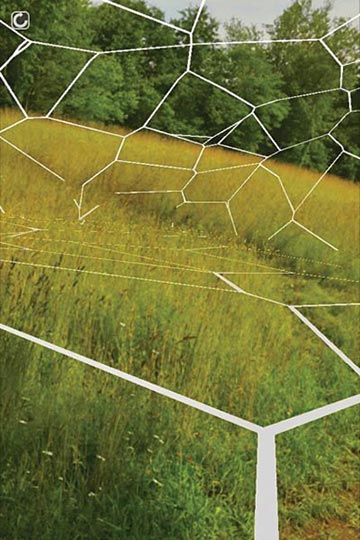BY: ORVIS STARKWEATHER
For the past couple of weeks, my Snapchat has been exploding with videos featuring their new Augmented Reality (AR) enhanced filters. While I have been fascinated with Augmented Reality for quite some time, many of my friends haven’t been quite so enthusiastic. While most of them are still more interested in debating social justice strategies and gushing over the latest Steven Universe episode than exploring the questions Augmented Reality raises, I still feel like a subtle shift happened.
AR has been heralded as a responsive, immersive experience that holds promise for museums as a way to better integrate their collections with the virtual world. But it would be hasty to throw money and resources at any project without assessing the institution's goals and devising a calculated strategy on meeting those targets. With the aim of furthering the discussion on how AR can be used as a tool, I offer these 7 ways the technology can be integrated into museums:
1. Enhancing a Sense of Place Outside of Museum Walls
From traditional walking tours to public artworks to commemorative plaques, wanting to extend history and art experiences beyond the museum are nothing new. Most museum professionals have probably encountered this idea before in the media coverage of apps like the Museum of London’s StreetMuseum app. GPS coordinates are used to trigger the AR features, creating a new way to experience the space.2. Games and Play in Museum and Gallery Settings
Again, Museums and Gallery spaces have a long history of incorporating games and play into their programs, but AR offers more options on the kinds of games that can be played. The immediate feedback generated by AR, can lead participants to be more aware of how their bodies move and interact with space. Much like a dérive, an AR game can provide a method for experiencing sites to generate new connections or new ways of seeing. Anyone up for an Augmented Reality scavenger hunt in a historic house?3. Animating Static Objects and Displays
To ensure the longevity of its objects, many museums are littered with glass cages and no touching warnings that ensure the objects are viewed statically. AR can provide a way to animate artifacts and restore a sense of their original state. A Toronto-based example of this would be the Ultimate Dinosaurs: Giants from Gondwana exhibit where AR was used to show how the bones would have moved.4. Labeling and Identifying
When looking at a complex object, it may be difficult to pick out relevant information. Providing identifying notations or instructions can offer users a rewarding experience when puzzling over an object. It’s a great way to break information down into manageable chunks and reduce user frustration while learning.5. Juxtaposition, Interventions, and Other Changes to Setting-based Narratives
Objects and architecture face many constraints to the settings in which they can be displayed. The use of juxtaposition such as displaying a forgery beside the original and interventions into the museum spaces like WeARinMoMA where unsanctioned artworks were displayed using AR within the MoMa offer possibilities to alter what stories are told. While museums support some of these AR applications, others are made by people outside of the institution which has the possibility of creating more democratic exhibits. |
| Leeser Architecture, part of ‘Augmented Reality’ at the Omi International Arts Center. Source. |
6. Exposing Hidden Parts
Normally, we are limited to only being able to see the outer layer of an object, but AR can be used to showcase parts of an object happening under the surface. X-rays can be overlayed on paintings, and the face of a clock can be stripped away to reveal its inner workings. Some institutions have also been investing in visible storage to display parts of the collection that normally would remain hidden to visitors. AR could be used to generate similar experiences, where 3D scanned objects are displayed to scale and can be manipulated by viewers.7. Trying on Historic Costumes
There are many museums that already feature historical reconstructions of dress-up clothes, but you could easily kick your next selfie up a notch by augmenting it with a divine period piece. The low-risk nature of the AR and the ease at which one can change outfits should allow more people to engage. This will be a great strategy for generating social media buzz about an exhibition.Want more information on Augmented Reality in Museums? Here are a couple entry points to get you started:
- Geoffrey Alan Rhodes youtube video AR on AR: Future Museums Now - Augmented Reality Musings
- Gabriel Resch’s MI thesis Vision-based Augmented Reality for Formal and Informal Science Learning


No comments:
Post a Comment
Note: only a member of this blog may post a comment.